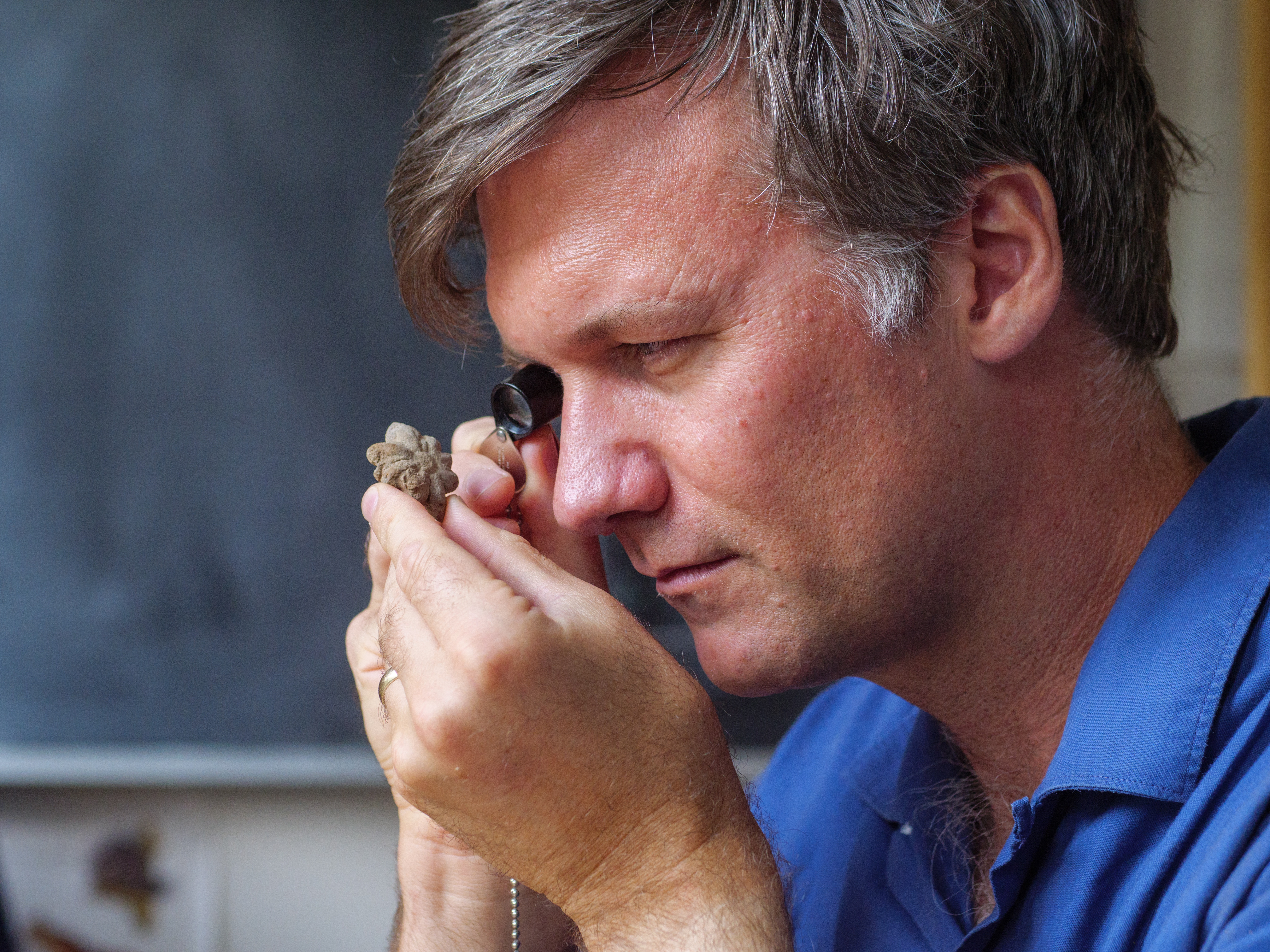I'm Carl Simpson, a paleobiologist at the University of Colorado Boulder and the CU Museum of Natural History. I work on the evolution and macroevolution of group living in animals, from multicellularity to colonial marine invertebrates, especially bryozoans and corals. Bryozoans and corals are structured hierarchically, with a mix of important colony- and zooid-level attributes. I am interested in understanding how their evolution is guided by the interactions between selection at the zooid, the colony, and species levels.
Papers
Origin of division of labor is decoupled from polymorphism in colonial animals
Levels of selection and macroevolution in organisms, colonies, and species
Experimental Snowball Earth Viscosity Drives the Evolution of Motile Multicellularity
Physical constraints during Snowball Earth drive the evolution of multicellularity
Early proliferation of avicularia in the Cretaceous cheilostome bryozoan Wilbertopora a diversification event guided by ecological exploration
Levels of Organization in the Biological Sciences. Vienna Series in Theoretical Biology edited by Daniel S. Brooks, James DiFrisco, and William C. Wimsatt
Tonian Low-Latitude Marine Ecosystems Were Cold Before Snowball Earth
Coming together to understand multicellularity
When did mammoths go extinct?
Aggregate Trait Evolvability and Macroevolution in Two Sister Species of the Bryozoan Stylopoma
Bryozoan revelations
Reproductive innovations and pulsed rise in plant complexity
Adaptation to a viscous Snowball Earth Ocean as a path to complex multicellularity
From the individual to the colony: marine invertebrates as models to understand levels of biological organization
An ecological driver for the macroevolution of morphological polymorphism within colonial invertebrates
Coloniality, clonality, and modularity in animals: The elephant in the room
How colonial animals evolve.
The inseparability of sampling and time and its influence on attempts to unify the molecular and fossil records
The measurement of species selection on evolving characters
Reconstructing the Dust Cycle in Deep Time: the Case of the Late Paleozoic Icehouse
Understanding macroevolution through the origin of higher taxa
The case for species selection
Evolutionary determinants of morphological polymorphism in colonial animals
Marine extinction risk shaped by trait–environment interactions over 500 million years
Paleontological baselines for evaluating extinction risk in the modern oceans
Enriching macroevolution
Differential niche dynamics among major marine invertebrate clades
Simple Method for Estimating Informative Node Age Priors for the Fossil Calibration of Molecular Divergence Time Analyses
Species selection and the macroevolution of coral photosymbiosis and coloniality
Equatorial decline of reef corals during the last Pleistocene interglacial
Long-term differences in extinction risk among the seven forms of rarity
Extinctions in ancient and modern seas
Species selection in the molecular age
The evolutionary history of division of labour
Evolutionary diversification of reef corals--a comparison of the molecular and fossil records
Pioneering Paradigms and Magnificent Manifestos – Leigh Van Valen’s priceless contributions to evolutionary biology
The Miscellaneous Transitions in Evolution
How many levels are there?
The diversity of life through time
On the potential for ocean acidification to be a general cause of ancient reef crises
The role of extinction in large-scale diversity-stability relationships
Species selection and driven mechanisms jointly generate a large-scale morphological trend in monobathrid crinoids
Reefs as Cradles of Evolution and Sources of Biodiversity in the Phanerozoic
Assessing the role of abundance in marine bivalve extinction over the post-Paleozoic
Phanerozoic trends in the global diversity of marine invertebrates
How similar are branching networks in nature?

